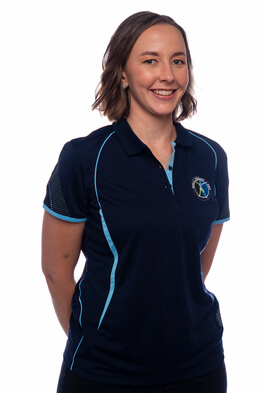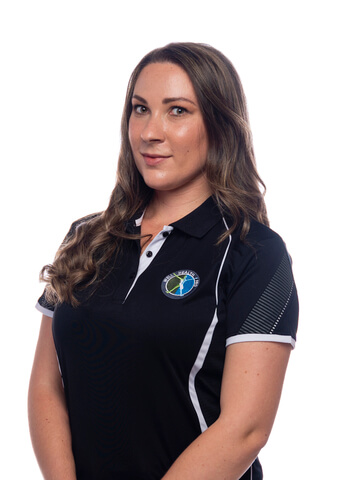Vestibular rehabilitation therapy (VRT) is not another virtual reality based in the metaverse. Vestibular rehabilitation is a specialized field of physiotherapy and is a safe and effective treatment option for vertigo and dizziness. This article explains exactly what you can expect from vestibular physiotherapy treatment.
Dizziness and vertigo symptoms are caused by misinterpretation of information by your brain from the eyes, ears, and body position. What can a physiotherapist possibly do to treat vestibular dysfunction? We identify which of these systems are contributing to your symptoms, treat the cause and design a custom vestibular rehabilitation program to help your brain make sense of all the information it receives.
What exactly is Vestibular Rehabilitation Therapy (VRT)?
Vestibular rehabilitation is a specialized field of physiotherapy, not well known in South Africa. Vestibular rehabilitation therapy includes specific assessment techniques, repositioning maneuvers, gaze stability, and balance exercises.
Why we use vestibular rehabilitation therapy
Vestibular rehabilitation therapy is used by physiotherapists to treat various vestibular conditions. The aim of vestibular rehabilitation is to help your brain distinguish the sensory information it receives from your eyes, vestibular apparatus within the inner ear, and body position.
With vestibular pathology these three pathways of sensory information get confused and your brain’s only way to keep you safe is to make you feel very dizzy so that you can’t participate in an activity that can be potentially harmful, like driving or walking in the dark, or on uneven terrain.
Healing Effects of Vestibular rehabilitation
- Decrease intensity of vertigo
- Improve balance
- Minimize the risk of falling
- Promote confidence and independence
- Return to previous movement ability
- Gain stability
- Lessen dizziness
- Increase neck range of motion
“Feeling like you’re intoxicated and losing control, without a drop of liquor.
Losing balance & dizzy?”
What is Vestibular Therapy?
Physiotherapists use vestibular therapy techniques to treat balance disorders originating within the inner ear. Don’t let the idea of rehabilitation exercises put you off, it is nothing like pumping weights in the gym to bulk up and improve strength. Vestibular rehabilitation is noninvasive, meaning no water is injected into the ear canal, like with caloric testing. The aim is to restore the communication between the sensory information received from the left and right vestibular systems. When the sensory information “makes sense” to the body you will feel balanced and stable.
Different types of vestibular treatment techniques
Repositioning maneuvers
If you have BPPV, where crystals are moving within the semicircular canals within your inner ear, our physiotherapist uses the correct maneuver to reposition the crystals by moving them out of the semicircular canal (canalithiasis) or remove the crystals if they adhered to the cupula (cupulolithiasis). We will guide you through the right sequence of movements no more than three times during a single treatment.
Gaze stabilization exercises
To enhance the accuracy of interpretation of sensory information received from your inner ear and eyes, we use gaze stability exercises. Doing these exercises the head and eyes are forced to move in opposite directions while you keep a target in focus. These exercises can be done lying down, sitting, standing or balancing on an unstable surface or one leg. We work within your ability and ensure that you know how to do this safely at home.
Habituation exercises
After a vertigo attack, you may feel hesitant to turn in bed, look up to rinse your head, or bend down to pick something up from the floor. The goal of habituation exercises is to reduce dizziness through repeated exposure to specific movements or visual stimuli. Habituation exercises make you more comfortable with these movements within a safe environment.
Balance training
We need adequate balance to move around safely and navigate obstacles like stairs, sidewalks, and uneven surfaces. Balance training requires patience and focus. Standing on one leg or even closing your eyes may be included during this phase of your rehabilitation.
Anatomical changes from vestibular rehabilitation that relieve vertigo
With acute, severe vertigo attacks that last seconds to minutes, the culprit may be BPPV. Benign paroxysmal positional vertigo is treated effectively with vestibular physiotherapy. Crystals become dislodged and either move into a semicircular canal or get stuck on the hair cells of the cupula. Repositioning maneuvers move the crystals away from where they are causing symptoms. The crystals are normal, they are just not supposed to be in the canals or stuck to the cupula. Like a car would cause havoc when squeezing into a walk way, just move back to the vehicle lane.
Once the crystals are removed the intensity of your dizziness should immediately improve. The residual sensation of movement, as though you are on a boat settles with vestibular rehabilitation, like gaze stabilization, habituation and balance exercises.
Physiological changes that makes sense of sensory information again
When confronted with information that doesn’t make sense, like sitting in a still standing vehicle while your neighbor’s car rolls forward or back, immediately stimulate action to keep you safe and avoid an accident reaching for the brake pedal. The same happens with a vestibular disorder, the information your brain is receiving doesn’t make sense and to keep you safe you feel bad, dizzy, nauseous, and unsteady. So you come to a literal stand still and you are kept safe.
Gaze stabilization, habituation and balance training gets repetitive sensory messages delivered to the brain within the safe environment of the treatment room or your own home. As the body adapts and gets more comfortable we can progress your rehabilitation to include shopping, driving in the rain and balancing on one leg again.
Vestibular rehabilitation therapy feels like:
Different treatment techniques are used during a vestibular rehabilitation consultation, depending on your unique case. Vestibular rehabilitation is not painful at all. Because we aim to provoke your symptoms during our assessment, you may experience nausea, dizziness, vertigo or lightheadedness. You are in safe hands and none of these techniques will delay your recovery, on the contrary, we will get you better quicker.
Home exercises will include gaze stability and balance retraining, which will temporarily increase your symptoms for a short duration.
How long does vestibular physiotherapy treatment take?
Vestibular rehabilitation therapy consultations are an hour long. During our time together we address all the factors contributing to your symptoms. Repositioning maneuvers take 10 minutes, and vestibular rehabilitation exercises take about 30 minutes. Often, your physiotherapist will combine vestibular physiotherapy with other treatment techniques, like soft tissue release, stretching, manual therapy and stability exercises for your neck to have a bigger and more prolonged effect.
How many times should I go for vestibular rehabilitation therapy?
You could feel the effect of the repositioning maneuver after your first session. It can be used in subsequent treatment sessions as your symptoms require.
Your physiotherapist will discuss a treatment plan with you, we’ll give you an idea of how long it will take for your unique condition to improve and how often treatment is needed. We’ll need 6-8 sessions to treat and progress your rehabilitation exercises. Mostly we see you twice during your first week, and once a week for the next two weeks and then once every second week in the next month.
What can I do at home to ensure my vestibular physiotherapy is effective?
There are a few simple things you can do at home to ensure your vestibular physiotherapy treatment is effective. Our physiotherapist will discuss it with you during your consultation. We are addressing the underlying cause of your dizziness and vertigo symptoms with repositioning maneuvers for BPPV and then teaching the brain to interpret sensory information with specific exercises.
Your physiotherapist looks at the bigger picture and discusses possible contributing factors to your vertigo symptoms with you. This may require you to avoid a few things. With vestibular physiotherapy treatment, it is important to comply to the whole treatment plan. This is the best way to get long-lasting symptom relief.
There are a few things you can do at home:
- Keep upright for the next 6 hours, reclining rather than lying down flat
- Use anti-emetic medication as prescribed, it won’t affect or mask symptoms
- Ginger or peppermint tea has been shown to decrease nausea
- Do your prescribed home exercises as discussed during your consultation
- Avoid looking at fast moving targets, like an action movie, sports, gaming or scrolling on your screen
Cost of vestibular physiotherapy
There are certain medical aid rates for vestibular rehabilitation therapy. You will never pay for only vestibular therapy, as it forms part of an entire treatment, and as you can see encompass a combination of many different treatment techniques. It’s the complete treatment package that shows real, lasting improvement.
Medical Aid Code – 501
The medical aid tariff code for vestibular rehabilitation falls under the 501 code. Most good medical aids offer re-imbursement for vestibular therapy.
Does it make a difference to have an experienced physiotherapist apply vestibular physiotherapy?
The experience and skill of your physio make all the difference to accurately diagnosing, identifying contributing factors, and applying treatment techniques with precision. This is not something you can do or copy form YouTube. You might risk making your vertigo even worse if you do a repositioning maneuver to the wrong side.
Our physiotherapists have years of clinical experience and in depth knowledge of your body’s anatomy. They understand the physiology of vestibular pathology and know which techniques are suitable to help you heal quicker.
Once established your physio will teach you the correct repositioning maneuver to do at home should you ever experience an acute vertigo attack again.
Conditions that respond well to vestibular rehabilitation treatment
Special care must be taken with Vestibular therapy if:
Are there any side effects to vestibular treatment?
Yes. We do recommend that you have someone drive you to your first consultation as you may feel dizzy and nauseous after the assessment and treatment. If you are feeling nausea and vomiting, please feel free to take anti-emetic medication as prescribed by your doctor before your consultation, it will not affect our assessment. You may wish to not eat 3 hours before your consultation to avoid the risk of vomiting.





